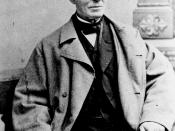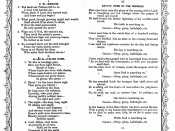One of the greatest outcomes of the Revolutionary Era was a growing movement in opposition to slavery. As a result of mechanization and farming, slavery became dominant and very important to the economy, particularly in the south. Many white people began to question the morality of slavery, noticing the injustice in denying people of their liberties. Soon, antislavery societies were becoming common, and the north gradually provided for the abolition of slavery while the south still considered it a "positive good". The antislavery movement, which eventually developed into the abolition movement became radicalized during the early 1830's.
The beginnings of the antislavery movement were evident right after the revolution. Every state except for Georgia and South Carolina had outlawed the slave trade. Then, in 1782 Virginia passed a law that stated that owners must free their slaves. Consequently, by 1790, over ten thousand slaves had been set free. Ten years later, antislavery societies were forming from states ranging from Virginia to Massachusetts.
Gradually, other northern states had followed, providing for the abolition of slavery. However, after the cotton gin was introduced to the economy, instead of eliminating the need for slavery, it actually had the opposite effect--the south now needed slavery more than ever. In addition, before Missouri joined the union, many northerners opposed the idea of Missouri becoming a state because it would allow the expansion of slavery and also give them an advantage in the senate. In the Missouri Compromise of 1820, Henry Clay proposed to let Missouri enter the union as a slave state, and Maine as a free state. It was accepted since it preserved the balance between slave states and free states. With the passage of the Missouri Compromise, slavery became a national issue.
Soon the abolitionist movement arose, a crusade based on the...


